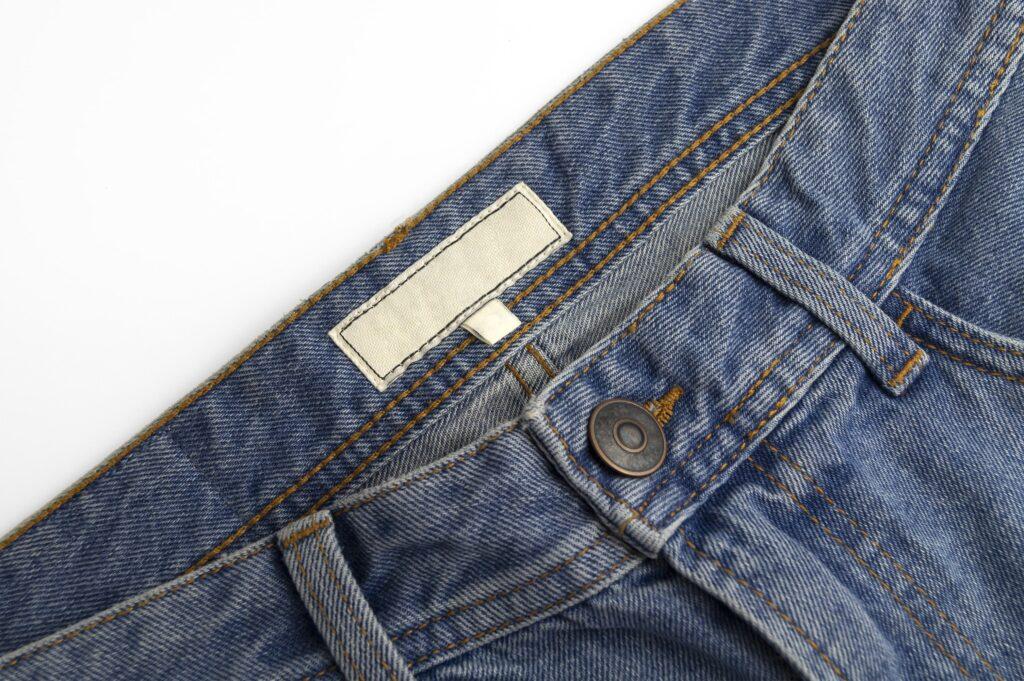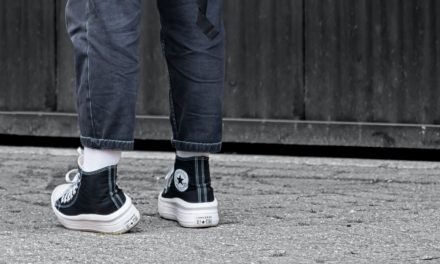This article explores accurately measuring women’s pant sizes. It includes tips on how to find the right fit and details about sizing systems used in Canada. Accurate measurement requires attention to detail, and slight errors are common when navigating this process.
Shopping for women’s pants can present a challenge, especially when one is unfamiliar with measuring techniques. Many individuals have faced confusion in determining their size due to the presence of multiple sizing systems in use within Canada.
Additionally, we’ll discuss the advantages and disadvantages of each system, providing helpful guidance for your next shopping trip.
Knowing the Basics
Understanding the basics of measuring women’s pant sizes in Canada is essential to find the perfect fit. It should be noted that women’s pant sizes can differ by brand and style, making it necessary to check the size chart before making a purchase.
To achieve accurate measurements for your pant size, you must use the appropriate tools. A fabric measuring tape is crucial for this purpose; however, accuracy requires measuring over bare skin or tight-fitting clothing.
To measure your waist accurately, locate its narrowest part above your belly button and take that measurement. For hip measurement, find the fullest area of your hips while keeping the tape level.
Avoiding common measurement mistakes is crucial for getting the right fit. Taking incorrect measurements like an improperly placed waist tape or a wrong hip measurement can lead to poor fitting clothes or picking the wrong size. It’s imperative to follow the given measurement guidelines for accurate readings and finding suitable sizes that perfectly fit you.
To measure for accurate pants size, it is essential to take the correct waist and hip measurements. When measuring your waist, ensure the tape measure fits snugly but not too tight or too loose.
For hips, measure at the widest point and keep the measuring tape level. To guarantee precision, consider asking someone to assist you with measurements. Remember that pant size should not be confused with jean/dress size for a perfect fit.
To convert your measurements in inches to pant sizes, simply take your waist and hips measurements. For example, if your waist measures 30 inches and your hips are 40 inches wide, add an extra 2-3 inches to the waist measurement, then round up the number to the nearest even value. This figure will be your pant size.
Understanding Women’s Pant Sizes in Canada:
Measuring women’s pants can be a tricky task, especially for those who lack accurate measurement skills. Precisely measuring the waist and hip is crucial to achieve the perfect fit size. In Canada, pant sizes are usually calculated by determining the measurements of waist and hip in inches. However, making common measuring mistakes could lead to inaccurate sizing patterns that may not flatter your bodyline correctly.
Common Mistakes to Avoid:
One common mistake when purchasing pants is not following the manufacturer’s measurement guidelines. It’s crucial to refer to the sizing chart provided with the specific pair of pants you’re interested in, as each manufacturer may have a different chart.
Another mistake is taking measurements over bulky clothing, which can negatively affect accuracy. To ensure accurate measurements, it’s essential to measure yourself in undergarments as recommended by the manufacturer.
Tips to Measure Accurately:
Measuring accurately starts by obtaining your waist measurement. The most accurate way to do this is by wrapping a tape measure around the narrowest part of your torso – your natural waistline. For finding hip measurement, you should wrap the tape measure around the widest part of your hips and buttocks while ensuring that it’s straight and parallel to the floor. Once you have both measurements, compare them to the manufacturer-provided size chart.
How to Convert Inches to Pant Sizes:
To determine your pant size from inches, measure your natural waist and subtract one inch. Then divide by two and consult the size chart to find your corresponding pant size. Each inch corresponds to a different pant size on the chart. To locate your specific measurement, simply refer to the chart and find the matching pant size.
How to Buy the Right Pant Size:
One of the essential steps in buying pants is knowing your pant size. However, it is crucial to double-check the size chart provided by the manufacturer before making a purchase. Note any discrepancies or variations that could affect the fit and opt for a larger size if you’re unsure. Remember, most pants can be tailored later to achieve a better fit.
To accurately determine women’s pant sizes in Canada, one must have basic knowledge and avoid common measurement errors. Always reference the manufacturer’s size chart and be aware of any inconsistencies or differences in sizing.
Getting the Right Measurements
Accurately measuring women’s pant sizes in Canada is vital, as it ensures an appropriate fit. Avoiding common mistakes when taking measurements is crucial. One such error is not using a measuring tape correctly; the tape should be snug, but not overly tight against the body according to standard measurement guidelines.
Another mistake is wearing bulky clothing or shoes while taking measurements as this can affect accuracy levels greatly. To avoid such blunders, it’s important to wear form-fitting clothing or even undergarments while taking measurements of your waist, hips and inseam for greater precision.
Here are some tips for how to measure accurately:
To measure your waist, simply wrap a tape measure around your abdomen just above your navel. Ensure that the tape is snug but not overly tight or too loose.
Following these guidelines will ensure accurate measurements and prevent choosing the wrong pant size with confidence.
Accurate measurement taking is pivotal in determining the correct pant size for women in Canada. To avoid sizing errors caused by bulky clothing or shoes, it is essential to wear form-fitting clothes or undergarments and position the measuring tape correctly.
This ensures that measurements are precise and accurate every time.
Common Mistakes to Avoid
To ensure proper fitting, accurately measuring pant sizes in Canada for women requires avoiding some common mistakes. Follow these tips to avoid such errors and measure your pant size correctly.
Failure to Follow Measurement Guidelines: Accurate waist and hip measurements are crucial for selecting well-fitting clothing. Incorrect measurement processes such as stretched tapes or loose holding techniques can yield false readings.
Measure your waist at the slimmest point, generally around two inches above the navel, and your hips at their broadest point, typically eight inches below the waistline.
Incorrect Measurements: When measuring themselves for pants, many women mistakenly wear thick clothing or have bulky items in their pockets such as a phone or wallet. This can cause inaccuracies in measurements and result in poorly fitting pants.
To ensure the most accurate measurements, consider these tips:
- Take multiple measurements and calculate the average.
- Use a level surface and position your measuring tools properly.
- Double-check that you measure your pant size accurately, it is essential to follow certain guidelines. This includes measuring yourself correctly and adopting useful tips that ensure a perfect fit. By avoiding common pitfalls, you can easily achieve the desired fit for your pants.
- Not Following the Measurement Guidelines: When measuring pant sizes, it’s important to follow the guidelines provided by the manufacturer or retailer. This is because each brand may have slightly different sizing standards. Additionally, some may recommend measuring during specific times, such as early in the morning before eating or drinking anything.
- Take note of any special instructions or caveats.
Ignoring the guidelines may lead to pants that fit poorly and feel uncomfortable, which affects their appearance as well.
Accurate measuring is crucial for successful outcomes. To achieve this, it’s important to follow the guidelines provided by the manufacturer or retailer and pay attention to any special instructions or caveats.
Taking the Wrong Measurements:
Accuracy is critical when measuring your pant size. Unfortunately, many people make common mistakes that lead to poorly fitting attire. To avoid unflattering outcomes, it’s crucial to take accurate measurements and steer clear of common pitfalls. The following are some of the most frequent mistakes to watch out for:
When measuring your waist and hip circumference, it’s important to measure over bare skin or form-fitting clothing. This will give you accurate measurements and prevent any extra inches from added clothing.
It is crucial to use a soft, flexible tape measure when measuring your body’s curves. A stiff tape or ruler will not conform adequately to your contours and can yield inaccurate measurements. Ensure that you select the correct type of measuring tool for the most precise and reliable results.
Different bodies have different shapes that can significantly impact how pants fit. For example, someone with an hourglass figure would not necessarily wear the same waist size as someone with a pear-shaped figure. It is crucial to consider your body shape while measuring for pants, to ensure an accurate and comfortable fit.
Measuring waist and hips accurately is crucial to finding well-fitting pants that enhance your body shape. Avoiding common measuring mistakes helps you achieve this goal for a successful shopping experience.
To ensure an accurate pant size, it is important to avoid common mistakes when measuring your waist and hips. Remember the key takeaway: precision in measurement leads to a better fit.
Tips to Measure Accurately
To ensure accurate measurements of women’s pant sizes in Canada, it’s important to avoid common mistakes. This article offers tips on precise measuring and reducing measurement errors.
- Not Following the Measurement Guidelines
Measuring the correct pant size involves following the measurement guidelines carefully. Many make a common error of measuring around their hips instead of their waists, resulting in an incorrect size. To avoid this mistake, one should read the instructions thoroughly before initiating any measurements. - Taking the Wrong Measurements
One common error that people make when measuring themselves is taking incorrect measurements. The act of measuring over thick clothing can increase the recorded size, resulting in a looser fit for any clothes purchased subsequently. To ensure an accurate measurement, it is recommended that the person being measured wears form-fitting clothing during the measuring process. - Getting the Right Waist Measurement
When you measure your waist, it’s essential to do so accurately. Make sure to measure where your waistband naturally sits and keep the tape level and snug but not tight. Exhale before measuring for accurate results. - Getting the Right Hip Measurement
When measuring the hips, it’s essential to measure the fullest part with the tape parallel to the ground for accuracy. To ensure precise measurements, consider seeking assistance during measurement.
Key Takeaway: Accurate measurements are crucial to finding the perfect fit when shopping for women’s pants in Canada. Those measuring must ensure they follow guidelines and take precise measurements of their waist and hips using a level, tight tape while carefully following measurement instructions. Omitting these steps can result in ill-fitting pants.
Getting the Right Waist Measurement:
Properly measuring the waist is essential for a comfortable pants shopping experience. The natural waist, typically the narrowest part of the torso beneath the rib cage and above the belly button, must be measured correctly. To ensure accurate measurements, follow these useful tips:
When taking measurements, it is recommended to use a soft and flexible measuring tape instead of a metal tape measure. The reason being that the former conforms better to your body shape ensuring accurate results. Using a hard metal measure may
The measuring process involves standing straight and positioning the tape measure around the waist with parallel alignment to the ground.
The tape shouldn’t be too tight or loose. It should fit snugly against your body while also allowing you to breathe comfortably.
To measure accurately, take the measurement at the end of a natural breath. Avoid exhaling or sucking in your stomach for optimal results.
To determine your pant size, measure your waist in inches and consult the size chart. The waist measurement will give you an accurate fit for the pants you are looking for on the chart’s sizing.
To measure the waist accurately for women’s pants in Canada, it is recommended to use a soft and flexible measuring tape. While standing up straight and breathing normally, wrap the tape snugly around your natural waist without pulling too tightly or leaving any slack. Measure in inches while ensuring that it feels comfortable but not loose or tight.
Getting the Right Hip Measurement:
When searching for the ideal pair of pants, taking hips into account is just as critical as taking waist measurements. To avoid commonly made blunders like purchasing excessively tight or too baggy trousers in the hip area, precise hip measurement is essential.
- Stand up straight with your feet together.
To measure your hips accurately, wrap the tape measure around the fullest part of your hips. This area is typically a few inches below your hip bones. - Take note of the measurement in inches: An accurate hip measurement is essential when measuring pant sizes in Canada. It guarantees a comfortable and flattering fit, making it critical to get right. Remember, the key takeaway here is that precise measurement leads to perfect fitting trousers.
- How to Convert Inches to Pant Sizes: Accuracy is key when converting measurements from inches to pant sizes. The process involves two simple steps: measuring the waist and hips with a tape, and then subtracting the hip measurement from the waist measurement to find the difference.
Accurately measuring and converting your pant size can ensure that you comfortably wear clothes that flatter your body.
Accurate measurement is crucial in converting inches to pant sizes. By closely following the steps and referring to size charts from specific brands, one can guarantee a comfortable and flattering fit tailored to their body type.
Calculating the Pant Size in Inches:
When determining pant sizes in inches, there are a set of crucial steps to consider. The first involves using a flexible tape measure and taking accurate measurements around your waist and hips while making sure it’s level all around.
From here, subtracting the waist measurement from the hip measurement provides you with the difference necessary for finding your inseam measurement. Divide this number by two for your inseam measurement in inches.
It’s essential to note that different brands can have slightly varied size charts, so consulting these before purchasing is recommended.
Additionally, sizes may vary depending on cut and style of pants; therefore, it is best advised to try them on in-store.
To calculate your pant size in inches, one must first take precise measurements of their waist and hips. After obtaining these measurements, subtract the waist measurement from the hip measurement and divide the result by two to acquire the inseam measurement in inches.
Consulting the brand’s size chart before making a purchase is also advisable. This key takeaway provides an easy-to-follow guide for those in need of figuring out their pant size accurately.
Converting Inches to Pant Sizes
When purchasing women’s pants in Canada, knowing how to convert inches to pant sizes is crucial for finding the perfect fit.
Unfortunately, there are common mistakes made when converting between measurements that can result in ill-fitting clothes. One issue is inaccurate measuring, which can completely throw off the conversion process.
Another problem arises when people don’t follow the correct formula for conversion and end up with incorrect sizing. The solution? Take precise measurements and double-check your calculations before making a purchase.
To make things even easier, try using a brand-specific pant size chart to guarantee accurate sizing. Follow these tips and you’ll be well on your way to finding pants that fit just right.
To ensure the perfect fit for women’s pants in Canada, accurately converting inches to pant sizes is essential. However, many people make common mistakes such as inaccurate measuring or incorrect formula usage.
To avoid these issues, it’s best to refer to a pant size chart that corresponds to the brand being purchased from. Remembering this key takeaway will help one purchase the right women’s pant size with ease and comfort.
How to Buy the Right Pant Size
When buying the right pant size, there are a few important steps to consider. Firstly, one should determine their actual measurements and take note of the inseam measurement from crotch to pant leg bottom.
Afterward, consulting the sizing chart of the desired brand is necessary as various brands have different sizing charts. It’s also helpful checking customer reviews for insights on how the pants fit.
Always opt for a larger size instead of a smaller one since pants can always be tailored down if needed.
When purchasing pants, it’s always wise to refer to the size chart of the brand and keep in mind that different brands may have varying sizing charts. It’s recommended to choose a larger size and make necessary alterations if required later.
Knowing Your Pant Size:
In Canada, it’s crucial for women to find their correct pants size for a comfortable fit. Many assume that pant sizes are consistent across brands but this is not always the case. To avoid disappointment while shopping, knowing your accurate size is important.
To avoid making sizing errors, it’s recommended that shoppers take accurate measurements before buying new pants from an unfamiliar brand. Doing so can ensure a proper fit and size.
It’s also important to consider the style of pants being purchased, as different styles may require varying measurements – for example, skinny jeans versus boyfriend jeans.
For a successful purchase, it’s important to check the pant size chart provided by the brand or retailer beforehand. To ensure the perfect fit, reading reviews from shoppers with similar body shapes can be beneficial.
Some retailers also offer free returns or exchanges which makes finding your ideal size much easier.
💡key Takeaway: Don’t assume your pant size remains the same for all brands. Always measure yourself accurately, check the size chart and read reviews from other shoppers before making a purchase.
Checking the Pant Size Chart
When purchasing pants, it’s crucial to refer to the brand’s size chart for accurate fit. One common pitfall is assuming that all brands use the same sizing system, according to The Right Fit Co.
Each brand has its unique size run and checking their size chart is necessary. It’s also essential to consider other critical factors like fabric, cut, and stretch that influence the fit beyond just looking at the pant size number.
As stated by fashion industry veteran Lauren Chan: “trying on different sizes can help you determine your best fit.”
To summarize, always consult a brand’s pant-size chart before making a purchase and keep other important elements in mind that contribute to an ideal fitting pair of pants.
To ensure the perfect fit, always refer to the pant size chart provided by the brand before making a purchase. Don’t solely rely on your pant size number as different brands have different sizing conventions and measurements.
Conclusion
To ensure accuracy when measuring a woman’s pant size, it’s important to avoid common mistakes. An error many make is not considering the difference in waist circumference between men and women.
Additionally, measuring at the narrowest part of the waist can also lead to inaccurate measurements. Instead, measure around the fullest part of the hips at their natural position for pant size and around the bellybutton for waist measurement.
Remember to use inches or centimeters as your unit of measurement and follow these tips for precise results every time.













